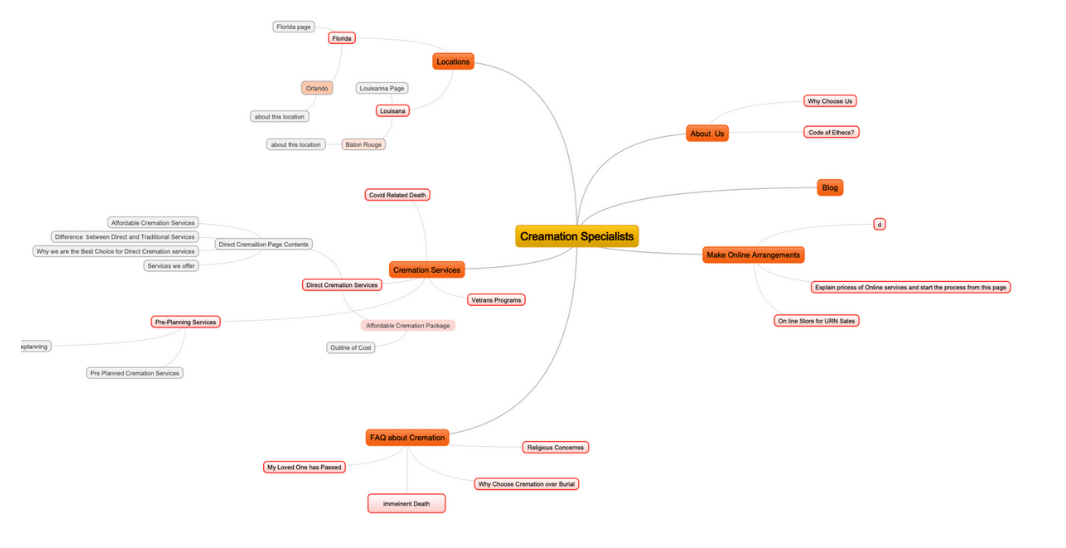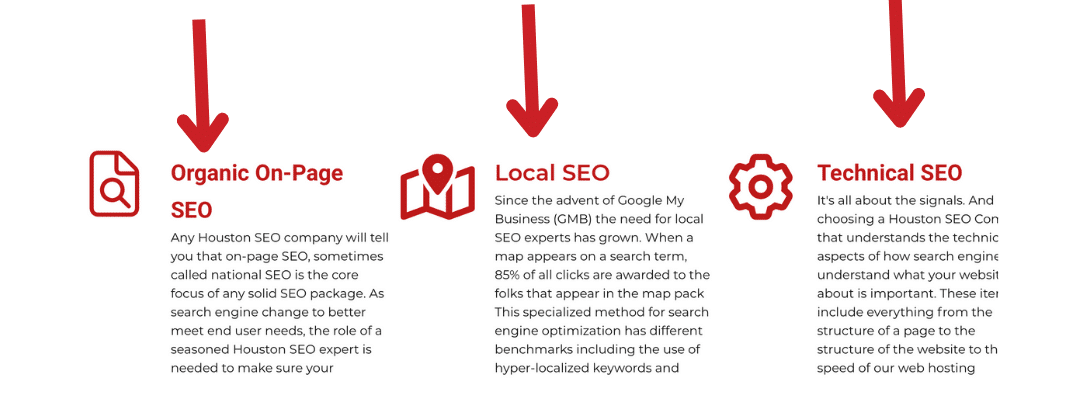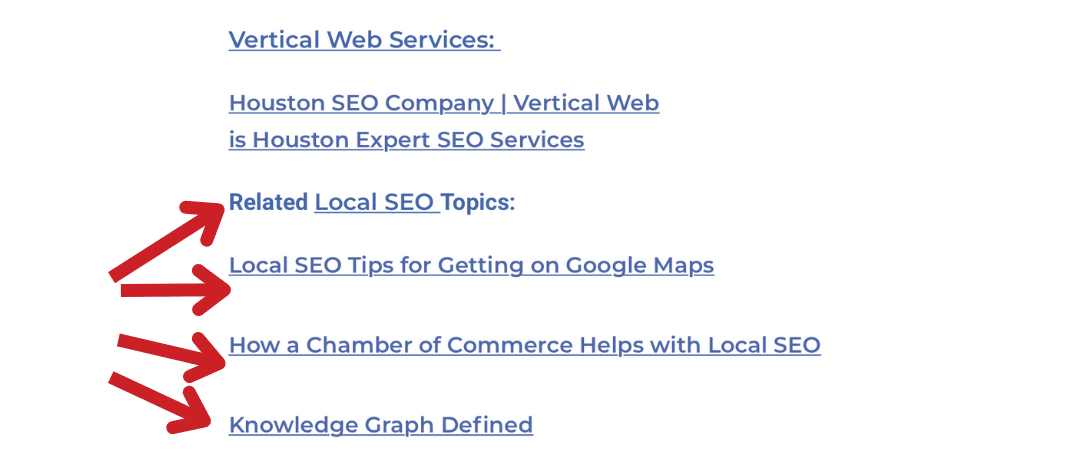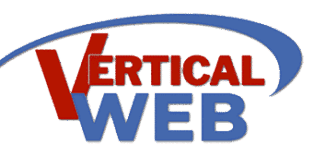Subscribe to Our Podcast Apple Podcasts | RSS
Their back! Well I think they never went away. What I’m talking about is content silos, or as ahref called them a topic cluster. On a side note, recently there was a post on twitter about how people rename things and then go Eureka, I found something new. This Eureka, whether called content hub, topic cluster or silos, have been around since day one. It is just we have not seen the emphasis in the recent past. I guess really since they started cracking down on the over use of anchor text on a page.
One of the catalysts of this I believe is John Mueller’s recent discussion on AI and how AI technology and the posting of that type of content is against Google’s Guidelines. As I have always taught, nothing beats a good solid piece of well written and well thought out content. And although I fully recognize that my industry, SEO and Web Design both foster this, anyone with a business, should not have issues producing this level of information. After all that is why you are in business, to solve issues other people have that they cannot solve themselves. And that, is the exact thing you should be writing about.
What I know from the SEO side of the world is that I could write down everything I know over and over and still very few people would get it correct. So don’t be afraid to produce content that gives answers and that paints yourself as an expert.
There has been a lot of chatter too on the quality of the page and what is deemed good quality and how does Google portend to decide what is good and what isn’t. In on words how good is it AI in understanding the meaning and construction of a page. As a human I know a bad page, or spun page when I see it. But how well will machine learning address this.
Additionally there are different types of on-page content. So we need to make sure we are using the right content at the right time in the right way. And honesty it can be tricky.
So what types of content are their. And that’s is what else I discuss in today’s class. How do you write articles to meet the objects and how do you write them to create this content silos or Topic Clusters.
What Types of Content are there?
Topic Page
So first lets understand the three page types. We have what we can a topics page and that is often the equivalate of a mini homepage for that section of the website. Often these are the pages that are linked in the navigation
Evergreen Content Page:
We also have an evergreen topics page that are usually nested under a topic. And of course, these are pages that as time goes on, will always stay relevant. For example, a page that talks about NASA, when talking about places to visit in Houston. NASA will always be NASA.
Blog Page (posts)
And then we have the colloquial blogs that are more relaxed and are often an editorial. More important, the facts of meat of the subject may change over time. So, time is a factor.
As with all things, it’s always best to start with a mind map of your website. You must be thoughtful in this process and also, I color code mine so that when I look back at it I know what my intent was at the time I created the mind map. I also put traffic notes if they are applicable and they are a starting place if I need to make and SEO adjustment. Best of all you can tell what is a topics page (they are orange on my charts) and then what are evergreen supporting pages (they are read on my charts) And then grey lets my writers what points should be covered in each of those pages or if additional evergreen is needed.
Remember To Create a Mind Map
Mind Mapping We recommend MindMaple to do this with. It is free (so it says). It works on both OSX and Windows and can be easily shared. We also use this to create our keywords and understand what we should be adding to pages to be relevant. So this is an important step on the process.

Once we know what type of page is needed we then try to get a feel for how long tha page should be. We will look at others in the space so we know if we need 1000 words or 3000 words. In the case of Vertical Web, so far almost every page has been over 2600 words for our topics pages. You can see them across the top in the form of web hosting, web design and web marketing. Inspect the web design page and the web marketing page where as they will be very helpful in describing the anatomy of a topics page.

If you scroll half way down we list all the services we offer so that we have a place to create interlinking from this page. This is important because it supports the page but also supports the navigation. Understanding how to create a fantastic topics page, is essential for seo success. Without that, the support for pages is lacking and it does not focus Google to what you think is important, especially if there is no follow through with supporting pages.

Then jumping to the bottom, you will see we silo them all together so Google understands base on the internal links we create what is grouped together. This process is something we used to do long before CMS systems like WordPress. And it is a process that when used right creates the internal links. Infact, I personally used this method to off set the lack of off site links in the past and really have never been a link building advocate. If you build your website right, with the right attributes the need to game the link building system is not needed. I might not say that as whole heartedly now, because people are aware of this and no longer make follow links like they used to.

Why I bring this all up is that I keep hearing about silos as if they were something new. We have had and used them for 2 decades now, and yet, some speak like this is a new thing that just happened.
Once you understand this part, it allows you a way to create and generate content ideas that you an write out. In doing so, I often think of my next content idea while still writing the one I have. I understand how my subject matter interconnects and am easily able to spin out addition, highly relevant content ideas to the topic I am writing.
In discussing local seo with my staff we came up with 4 related pages, just simple through our discussion. This will build a relevant ‘mini’ website of local seo content topics an signal to Google that we have a section on Houston Local SEO related content which helps drive that main keyword local SEO upward.
Anatomy of a Content Page
The anatomy of the actual pages themselves are relative to the pages around them in the search results. So one thing you need to look at is your competitors. There are tools you can use, or you can do it the old fashioned way. A free tool is seo minion which is a plug in for Chrome and it will give you the word count. So take 10 real competitors on your main keyword and find out what the average web page length is. Once your determine that, you will then know what you need to do to write a competitive page. Tis is an important side bar to all of this.
Our attached video and podcast work though all the issues associated with creating a proper page of content for you website.

- Technical SEO: Sign Up & Learn How to Get More Traffic! - April 14, 2025
- Optimize Your Website with Technical SEO – Sign Up Now! - April 11, 2025
- Digital Marketing: Leveraging AI for Web Development and SEO - April 10, 2025

